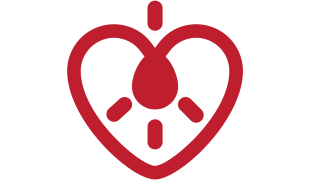- 7625
- 535
- 7
- 5
- 0
- Help Ukraine
About the solution
To solve this problem, Safwan built an electric bicycle made from spare parts he found around the camp. It can be used by people with disabilities to have more independence. The bicycle is guided through the handlebars, which are equipped with brakes. Five 12 volt batteries power the bike.
“Because of my disability I’m forced to be creative and find ways to help me live my life as easily as possible be it Syria or here, it’s the same”, the inventor explained.
Safwan hopes that is just the beginning, as he would like to learn more. “If possible I would like to study technology because I have many ideas but not the academic learning”.
Adapted from: http://bit.ly/2kmcxg9
What about you, do you have any solutions? Please share them with the Patient Innovation community!
https://www.youtube.com/watch?v=2LnKTqpwDSw
This solution shall not include mention to the use of drugs, chemicals or biologicals (including food); invasive devices; offensive, commercial or inherently dangerous content. This solution was not medically validated. Proceed with caution! If you have any doubts, please consult with a health professional.
DISCLAIMER: This story was written by someone who is not the author of the solution, therefore please be advised that, although it was written with the utmost respect for the innovation and the innovator, there can be some incorrect statements. If you find any errors please contact the patient Innovation team via info@patient-innovation.com
-
-
273
-
0
-
3122

Man adapts bicycle so that arm amputee can ride
Grip
Cycling
Limb Amputation
Strategy/Tip
Assistive Daily Life Device (to help ADL)
Muscle weakness
Limited range of motion
Reduced grip force (grip)
Loss of muscle coordination
Restoring mobility
Promoting self-management
Promoting inclusivity and social integration
Caregiving Support
Orthopedics
Rheumatology
Sports Medicine
United States
-
-
-
549
-
0
-
7442

Slacks with zippers on both sides for patients who have to stand up in public
CAREGIVING
(SELF)-CARE: DRESSING: Dressing independently.
Amyotrophic Lateral Sclerosis
Strategy/Tip
Body-Worn solutions (Clothing, accessories, shoes, sensors...)
Tremors
Muscle cramps or spasms
Stiffness or rigidity (difficulty moving)
Muscle weakness
Trouble with fine motor skills (e.g., writing, buttoning clothes)
Sleep disturbances
Numbness or tingling in the extremities
Restoring mobility
Managing pain
Promoting self-management
Managing Neurological Disorders
Promoting inclusivity and social integration
Preventing (Vaccination, Protection, Falls, Research/Mapping)
Caregiving Support
General and Family Medicine
Medical Genetics
Medical Oncology
Neurology
Orthopedics
Physical Medicine and Rehabilitation
Rheumatology
United States
-
-
-
568
-
0
-
11658

Man invents stick to help him push the elevator buttons
MOVING IN A WHEELCHAIR: Moving using a wheelchair.
Urban exploration
Traveling
Paralysis
Spinal Cord and Nerve Root Disorders
Cervical spinal cord injury/Tetraplegia
Assistive Daily Life Device (to help ADL)
Tremors
Muscle cramps or spasms
Difficulty coordinating movements
Stiffness or rigidity (difficulty moving)
Paralysis of the legs and lower body
Muscle weakness
Loss of balance
Numbness or tingling in the extremities
Twitching or involuntary movements (myoclonus)
Fatigue
Restoring mobility
Promoting self-management
Managing Neurological Disorders
Promoting inclusivity and social integration
Maintaining Balance and Mobility
Internal Medicine
Neurology
Orthopedics
Physical Medicine and Rehabilitation
Rheumatology
Mobility issues
United States
-
 en
en